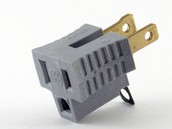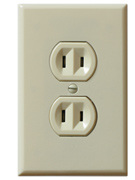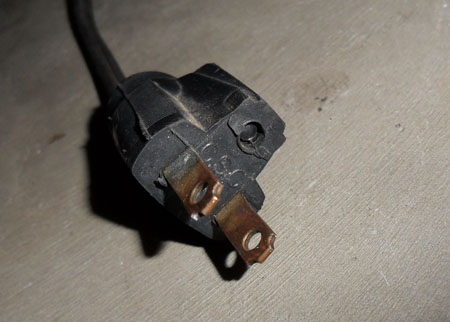|
Waco Texas - October 30, 2005: A young pastor steps into a baptistery to perform a baptism. Once he steps into the baptismal waters, he sees that the wired microphone on a stand is pointing away from where the baptism is going to happen. He reaches out to adjust it, and when he grabs the microphone, he is electrocuted. 800 people are watching, and they just see their pastor die within moments. I wasn’t there, and I am not for sure where the breakdown was in how he was electrocuted, but I do have some theories and some advice to throw out there:
These types of items can cost someone their life. I have seen this kind of stuff used in many churches as a quick and lazy way to kill hum in a sound system. These are installed by people whom just know enough about electricity to be really dangerous. Does it work? It can. Will it kill you – yes, in a “heartbeat.” The problem with using these devices, is that you lift the ground from the amplifier to its’ main power source, and so if there happens to be a short, instead of the electricity bleeding to the ground pin of the main power source (which you just lifted), it will instead be passed to the chassis (ground), then to the ground of the audio cable's connector, straight through the cable; to the microphone of the performer. When someone steps into a baptismal, that water is touching plumbing, which is indeed grounded. So when the person in the water touches the “live” microphone, the current shorting to the ground of the microphone body flows through their arm to the water – and the heart happens to be in the way. Another Thing to Consider You may be in a really old building. A lot of really charming churches were built a long time ago. Standards and methods for electricians back in the day were different than they are now. Many churches are wired with no ground conductor, and therefore leave room for an accident to happen. You may be thinking to yourself, “well what do we need to do?” You need to go through all of the power connections in your church to make sure everything is rolling with a ground connection. If you are in an old church with no ground conductor to the electrical sockets, a qualified and licensed electrician needs to be called. “But that could be expensive.” Not as expensive as someone’s life, and then later being sued by the grieving family (which happened in the above mentioned case). And While I'm At It Another way someone can be electrocuted are by instrument amplifiers. For instance: Allot of guitarists love vintage tube amplifiers because they can sound really great, but the problem with allot of these amps, is that they were wired with only a two-prong power cable. In these amplifiers, they have something that is called in the industry, “the death cap.” When this capacitor gets old and leaky, current is then passed from the circuit to the chassis, and in a tube amp, this current can average around 450 volts! Now the performer becomes the ground for the circuit because the electricity goes from the chassis, to the ground of the ¼” plug, to the guitar’s ground which is connected to the bridge, and what rides on the bridge? Metal strings. 450 volts can do the following to you: A. Make you lose control of your bowels. B. Kill You. C. Make you lose control of your bowels & kill you. This makes for a really bad day. Hey, for you visual learners, here is a video from some dude on the internet: If you have one of these amplifiers (which doesn’t have to be a guitar amp – it can be any vintage amplifier) – you really need to have it repaired by a qualified tube amplifier repair specialist. Poking around in a tube amp without knowing how to discharge the filter capacitors safely, can kill you, even with the amplifier unplugged. I myself have been repairing tube amps for years, and so I know how to really respect them and be sober minded when opening one up, but if you don’t know what you are doing, or don’t understand how a tube amplifier works, you can be in for a really bad fatal accident (this is my disclaimer). So, back to the original story. How do you make sure your pastor or others are not electrocuted during a baptismal service? Always use a wireless microphone(s) when doing a baptism. A wireless microphone usually runs on anywhere from 3 vdc to 9 vdc = non-lethal voltages. So The Rule Is: Never have any wired microphones by water whatsoever. How to keep water away from a wireless transmitter: A common place to put the transmitter pack, is in a top shirt pocket (if it has a button to hold it in), or on the back of the collar – clipped securely. Some other cool articles and other bits from around the web regarding this topic: http://www.audiosys.com/safety-circuit.html - A guitar safety mod A Cheaper, but Okie Dokie Hum Eliminator Hum Elimination on the Power Side http://www.rane.com/note151.html - Rane notes still rock (after all these years) http://www.rane.com/note110.html - Rane again http://en.wikipedia.org/wiki/Receptacle_tester - These can be handy to test your receptacles
0 Comments
Your comment will be posted after it is approved.
Leave a Reply. |
Do you like vintage recording gear and articles? You should visit our sister site: The Vintage Audio Portal!
**Advertise With Us! We have thousands of visitors a day. Contact us here to learn more.
Archives
August 2021
Categories |




